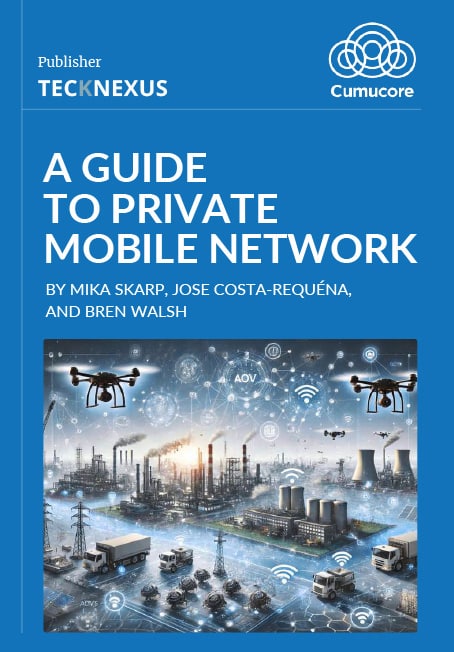Non
Public
Network
What is a Non-public network?
Non-public networks (NPNs), or Private Mobile Networks (PMN), have fewer restrictions than public networks. Without net neutrality requirements or the need to serve millions, these networks focus on specific business-critical use cases, enhancing organizational productivity. Each organization tailors its network to meet its unique needs. NPN uses the same network components than public networks but in scaled down fashion and with additional layers, billing, marketing etc.
what is a public network?
Public networks are accessible to anyone willing to pay a service fee, whether postpaid, prepaid, or bundled with another service. These networks are heavily regulated to ensure competition, fostering a level playing field for consumers and content providers alike. This regulation is known as net neutrality. While the ideal of net neutrality aims for equality, in practice, disparities always exist. Public networks are large-scale operations, involving billions in infrastructure investments to serve millions of customers. Despite significant capacity, congestion and variable network quality are common issues due to high usage.
public Vs private networks
Public or Private Network: Understanding the Differences.
In today’s world, we often take communication for granted. Just as we expect electricity from the plug the internet comes from the air, we assume seamless connectivity in our daily lives. We discuss “clouds” when referring to server farms and differentiate between wireline, wireless, and satellite technologies. However, communication can also be categorized by the nature of networks: public versus private.
The Cellular Network
Cellular networks comprise three main components: the core, transport, and RAN (Radio Access Network). However, the major cost drivers are not these components but rather the cell sites, billing systems, customer care, marketing, and customer acquisition efforts. Mobile operators focus on selling connectivity, typically in the form of SIM cards used by countless applications. Public mobile networks have been designed to provide the same service level for millions of simultaneous users coast to coast. This requires high investments and complex technology and they are difficult to operate. Read more about cellular technology evolution.
NPN Glossary
3GPP
Global standardisation organisation
MEC
Multi-Access Edge Computing
Network Slicing
Mechanism to deliver several virtual networks from one physical network
UPF
User Plane Functionality,
router to transmit data
DEFINITION
Non Public Network is 3GPP term to describe a network that is controlled by an organization whose main line of business is other than providing communication services to humans.
WiFi is the most common technology for private networks, familiar to us through username/password authentication and various frequencies. While WiFi is cost-effective and widely used, it excels in environments where traffic can be buffered and interference managed. Conversely, cellular technologies like 4G and 5G offer distinct advantages.
QUALITY
Providing good quality mobile connectivity requires three things: (1) you can control frequency to avoid interference, (2) you can manage the number of network users and (3) you can differentiate users by using different QoS profiles / network slices.
STAND-ALONE
Network has fully virtualized functions with interface to local data processing (MEC). NPN can have several Network Slices including own UPFs that are connected to different DNN. Network Slices can have different features and independent user groups.
KEY BENEFITS OF NON-PUBLIC NETWORKS
1. COVERAGE AND CAPACITY
Non-Public Networks (NPN) offer customizable coverage and capacity, allowing facility owners to build networks tailored to their specific needs. Cost is no longer a significant barrier. You can build a private mobile network anywhere, indoors or outdoors, even space stations. The network can be permanently installed or temporary settlement.
2. MOBILITY AND INTERFERENCE MANAGEMENT
Cellular technology outperforms WiFi in mobility, outdoor coverage, and interference management. Using regulated frequencies, cellular networks face less interference and are optimized for reliability, unlike WiFi, which is optimized for capacity.
3. SECURITY
Security is a hotly debated topic. While some argue that on-premises solutions are more secure than cloud-based ones, and cellular technology more secure than WiFi, it ultimately comes down to designing security into whichever technology is used.
The Evolution of Cellular Technology to provide non-public networks
4G
The fourth generation of cellular technology has evolved over the years, achieving significant market penetration. High hardware volumes have driven down costs, and the industry has developed fully virtualized cores, making it feasible for smaller user bases. 4G also called LTE is excellent solution for use cases where live HD video is not the primary use case.
5G
This technology differentiates services within the network, integrates seamlessly with non-telecom networks, and is fully software configurable. It uses more frequencies than 4G, offering higher capacity and lower latency due to improved signal processing. 5G has two main advantages compared to 4G, it can be used in HD video use cases and it can be integrated with other IT systems.
6G
Expected around 2030, 6G will offer even greater capacity, lower delays, and new capabilities. Beyond communication, it will integrate various sensors, generating data on users and the environment.
| MPN usage | WiFi | 4G | 5G | 6G |
|---|---|---|---|---|
| Frequency license | No need | Needed | Needed | Needed |
| Coverage | 10 – 100m | 10m – 10km | 10m – 10km | ~1km |
| Capacity | 1Gbs | 200 Mps | 1GBs | 10Gbs |
| Sensing capability | Yes | No | No | Yes |
Is a comprehensive exploration of the rapidly evolving field of private mobile networks, designed to demystify the complex world of telecom technology and provide readers with practical insights drawn from real-world deployments. The book serves as both a technical manual and a strategic guide, offering valuable perspectives on the benefits, challenges, and future potential of private mobile networks.
There is no one communication solution that fits everybody. Whether opting for a public or private network, the choice depends on specific organizational needs, desired control over the network, and the type of connectivity required. Each option offers distinct advantages and challenges, making it crucial to evaluate based on individual use cases and business goals.
Future calls for further automated processes for many reasons. Automation means in many cases AI capabilities and mobility. Mobility requires reliable wireless communication capabilities, it is a good time to start thinking about your strategy towards an autonomous world.
Strategies for Deploying Non-Public Networks
Where can you buy private mobile networks? Organizations can acquire private mobile networks from mobile operators, equipment vendors, or system integrators.
One word of warning is needed here, different countries have different regulations for frequency allocations. It makes sense to first contact local authorities to understand frequency situations in your own country.
Mobile Operators
They offer existing relationships and expertise in SIM cards and fixed internet connections. However, their focus is often on cloud-based management for cost efficiency.
Equipment Vendors
These vendors seek to manage private networks on a global scale, similar to mobile operators but with a broader reach.
System Integrators
With a local focus, system integrators excel in understanding local IT infrastructure and user needs. They manage networks locally, though they may lack deep expertise in cellular technology.






